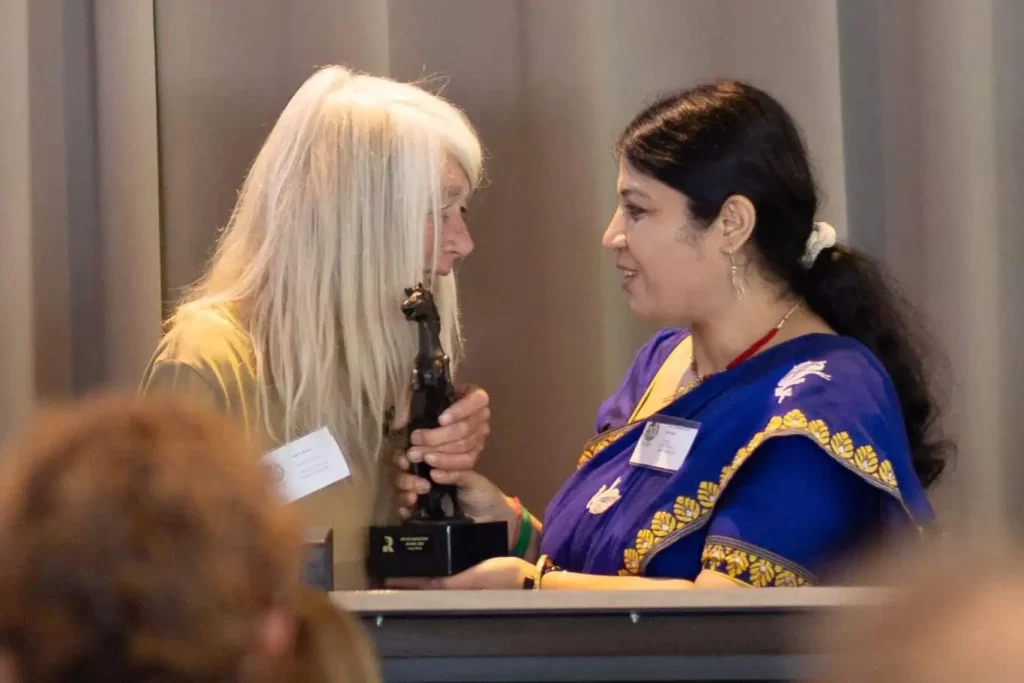Share:
Cloned Przewalski’s Foal’s Birth Offers Genetic Diversity for Endangered Species

On August 6, 2020, a momentous event occurred in Texas as the world witnessed the birth of the first successfully cloned Przewalski’s horse, pronounced “shuh-VAL-skees.” This historic event took place at the veterinary facility of Timber Creek Veterinary, a collaborator of ViaGen Equine. The foal, born to a surrogate domestic mother, is a genetic replica of a male Przewalski’s horse whose DNA had been preserved in cryopreservation for four decades at the San Diego Zoo Global’s Frozen Zoo®. This achievement not only resurrects lost genetic diversity but also marks a significant collaboration between Revive & Restore, ViaGen Equine, and San Diego Zoo Global.
Paul A. Baribault, president/CEO of San Diego Zoo Global, emphasized the importance of collaborative efforts in saving endangered species. He applauded this remarkable achievement, attributing it to their multidisciplinary approach, collaboration with top scientific minds, and the utilization of genetic material stored in their wildlife DNA biobank.
The birth of this cloned foal, a species first, holds promise as a valuable model for future conservation endeavors. Ryan Phelan, executive director of Revive & Restore, highlighted the potential of advanced reproductive technologies, including cloning, to rescue species by restoring lost genetic diversity.
This cloned foal, named “Kurt” in honor of Kurt Benirschke, M.D., a key figure in founding the Frozen Zoo and the conservation research program at San Diego Zoo Global, represents a significant milestone in Przewalski’s horse conservation. Cloned from a cell line preserved since 1980, this stallion has the potential to introduce crucial genetic diversity to the Przewalski’s horse population once he matures and successfully breeds.
Bob Wiese Ph.D., chief life sciences officer at San Diego Zoo Global, expressed hope that Kurt would play a pivotal role in preserving the genetic variation vital for the future of the Przewalski’s horse population.
The Przewalski’s horse, once extinct in the wild, has survived in zoos worldwide for four decades, with all surviving horses tracing their lineage to 12 Przewalski’s horses born in the wild. Although intensive breeding programs have helped recover the species, they have also resulted in losses of genetic diversity. However, the availability of living cells stored in the Frozen Zoo has opened the door to technologies like cloning, which can now halt these losses.
While reintroductions since the 1990s have established wild herds in China and Mongolia, preserving genetic diversity remains vital for the species’ long-term survival.
Advanced reproductive technologies are well-established in domestic horses and cattle, but their application to endangered species has been limited. Kurt’s successful birth underscores the potential of these techniques in conservation efforts, both now and in the future.
Shawn Walker, chief science officer at ViaGen Equine, reported that Kurt was born healthy and reproductively normal, exhibiting typical foal behaviors like head-butting and demanding milk from his surrogate mother.
ViaGen Equine, based in Texas, has collaborated with Timber Creek Veterinary for over 15 years, having cloned hundreds of horses worldwide using proven equine cloning techniques.
Revive & Restore, a wildlife conservation organization based in Sausalito, California, is at the forefront of promoting biotechnologies in conservation. Founded in 2012, their mission is to enhance biodiversity by applying 21st-century biotechnology to rescue endangered and extinct species.
San Diego Zoo Global’s commitment to wildlife conservation extends to on-site efforts at the San Diego Zoo, San Diego Zoo Safari Park, and San Diego Zoo Institute for Conservation Research, along with international field programs across six continents. Their work reaches over a billion people annually, spanning 150 countries through various media channels, children’s hospitals, and global supporters dedicated to saving species from the brink of extinction.
Source: San Diego Zoo
Photo: Scott Stine/San Diego Zoo Global






